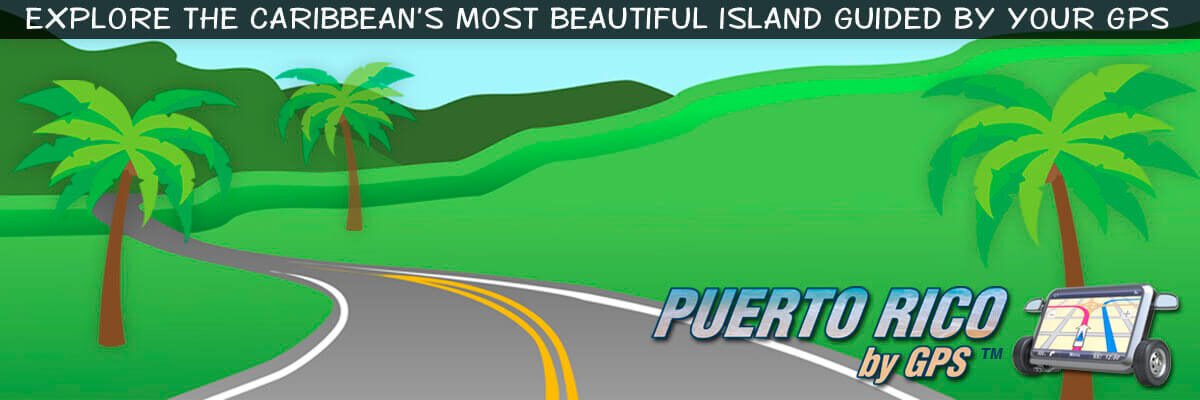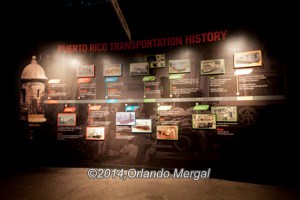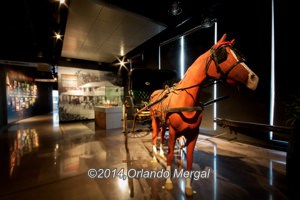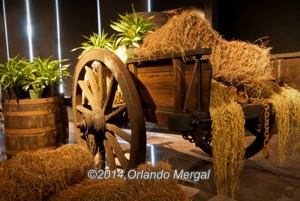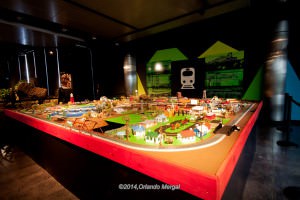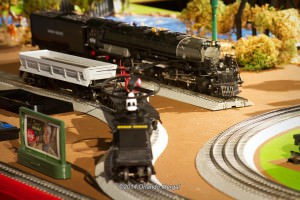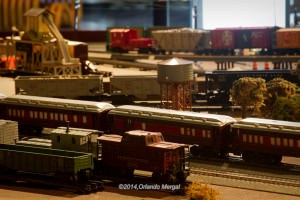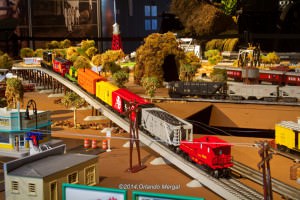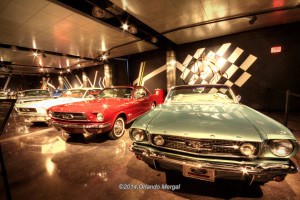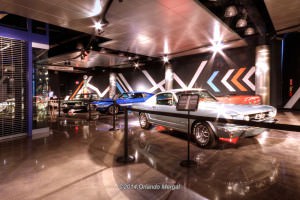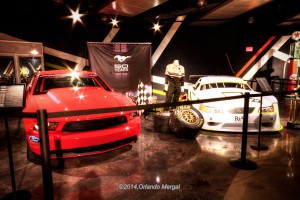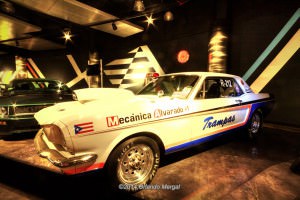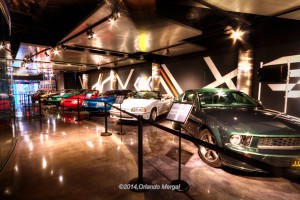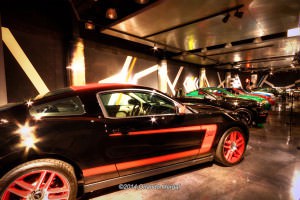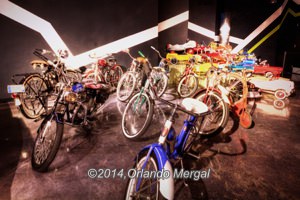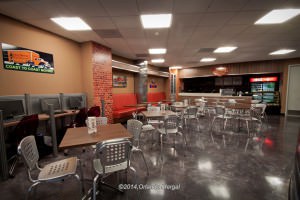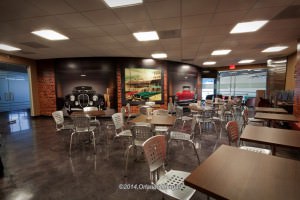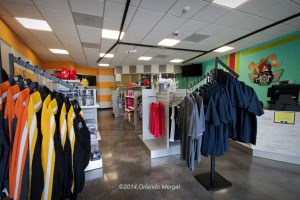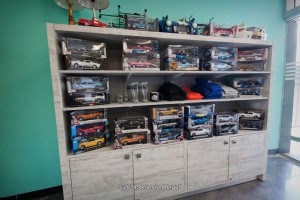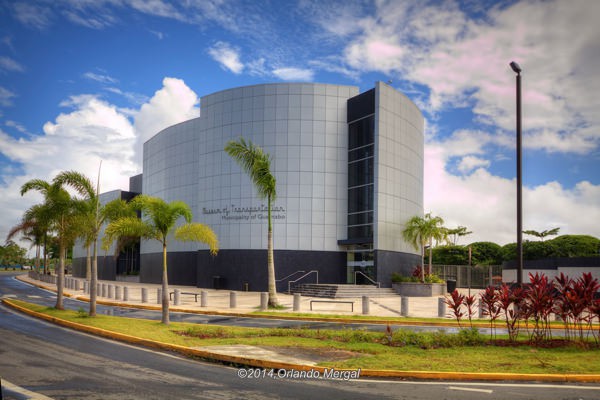
Museum Of Transportation, Guaynabo, Puerto Rico
Now here’s a place that you’d never expect to find on a small island like Puerto Rico. The Museum of Transportation, in the municipality of Guaynabo, is nothing short of a jaw dropper.
And it’s new! The museum opened its doors on December 1, 2013 and it has become an instant sensation among car aficionados of all ages and the general citizenry as well.
The Museum of Transportation is located on the corner of road PR-837 and Cecilio Urbina Street, right next to the Mario Quijote Morales Sports Arena. The state-of-the-art building was designed by architect Mario Corsino and it has a total area of around 32,000 square feet.
The first floor includes the main lobby, a reception area and a large exhibit area that is compartmentalized to help guide visitor traffic. But it can easily be converted to one large room that almost spans the entire level. On the second floor there is a large exhibition area with a smaller section dedicated to office space. Finally, the third floor includes the “Motion Cafe” cafeteria and meeting facilities for 100 visitors.
Last Tuesday I had the privilege of visiting the Museum on a private tour accompanied by none others than Mr. Jaime Vélez, the museum’s executive director, Ms. Fabiola Arce, the museum’s Communications Officer and Andrea, one of Ms Arce’s interns. And it was a blast. I felt like a kid in a candy store.
When you enter the Museum you go through a three-level lobby that has a huge mural reminiscing “Porto Rico Lines”. For several decades “Porto Rico Lines” was the only mode of transportation for people going to and from Puerto Rico and New York City. The company had several passenger ships and the term “embarcarse” (meaning to catch a ship) became commonplace among the islanders.
The Museum is open Wednesdays thru Sundays, from 10:00am to 5:00pm. Admission is $10 for adults and $5 for children. Senior citizens over the age of 60 still pay half price and –nothing at all– over the age of 75. However, the law granting them this privilege was recently modified and things could change in a near future. For up-to-the-minute information call the Museum’s switchboard at 787–200-3900 or visit the museum’s website at http://www.motpr.com.
When you enter the exhibit area you’ll be greeted both in English and in Spanish by a holographic image of a pilot. This exhibit is sponsored by the Inter American University’s School of Aviation, one of the Museum’s mayor sponsors.
Creating such a quality museum took lots and lots of money. And one of the ways that the Board of Directors gathered donations was through the sale of personalized tiles. Right after the hologram there’s a wall on your left with hundred of those tiles. These are just a handful of the many people that made this project possible.
Immediately after the tiled wall there’s a small open theater that runs a brief welcome movie covering the history of transportation on the Island; from the canoe to today’s urban train system. Immediately in front of the theater there’s also a timeline exhibit that summarizes the same information in linear fashion.
Have you ever wondered how people traveled long distances on horseback before cars were invented? It certainly wasn’t like you see in the movies, where the guy leaves Texas and arrives several weeks later in San Francisco on the same horse.
Of course, you could do that. But it would take forever. Why? Because the horse would need to rest as much as you would.
A more practical way was to change horses. And in Puerto Rico the place where you changed horses was called a “muda”.
The most famous of Puerto Rico’s “mudas” was in the municipality of Guaynabo, right where it met the adjacent township of “Río Piedras”. However, on July 1, 1951 “Río Piedras” became part of the capital municipality of “San Juan”. So today the area called “la muda” is where “Guaynabo” meets “San Juan”.
Well, right after the open theater there’s a beautiful exhibit that illustrates Guaynabo’s “muda”, complete with a horse and buggy and an oxen cart that’s 105 years old.
Puerto Rico also had trains. Between the end of the 19th century and the beginning of the 20th century Puerto Rico had a passenger train system that ran along the coast from the city of “Ponce” on the south coast, going west along the coast, reaching the city of “Mayagüez” on the west coast, continuing north to the city of “Aguadilla” and then heading east along the north coast towards San Juan.
Well, right after the oxen cart there’s a beautiful layout of model trains that includes many places that were actually part of the Island’s illustrious train history.
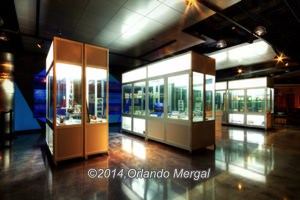
These glass cases contain all sorts of memorabilia about Puerto Ricos aviation, shipping and automotive history. Click on image to see it larger.
Next there are three glass cases that hold dozens and dozens of pieces spanning the Island’s aviation, shipping and automotive history. There you will find genuine airplane menus, tickets, promotional bags, model airplanes, original ship passenger lists, the original permit for our first governor’s car, license plates, learner’s pamflets, jacks, horns and even an original out-of-print copy of “La Historia de la Transportación en Puerto Rico” (The History of Transportation in Puerto Rico) by Emilio Huyke; the most complete book on this subject ever written on the Island.
The Museum also has two huge (130″) screens that normally project information about museum sponsors, but they are also used for other purposes during special events.
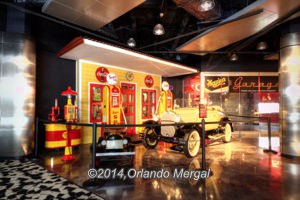
There’s even a complete 1930’s gasoline station with a Model “A” Ford. Click on image to see it larger.
From this point on is where the “toy store” experience began for me. There’s a genuine 1930’s “Shell” gasoline station, complete with a 1930 Ford Model “A” convertible that looks better than the day that it left the lot. Wow!!!
By now we were right next to the rear entrance where there’s a roll-up door and an elevator that doubles as a central exhibition stage.
All the cars that you see on the first level of the Museum of Transportation actually belong to the museum’s permanent collection. But the one’s on the second level belong to the Island’s private collectors who lend them to the Museum for three months at a time under a very strict contract that includes all sorts of environmental, security, maintenance and insurance provisions.
Cars entering the Museum are shut down immediately after they enter the building and are dollied to their final exhibition spot. Collections are changed every three months. For example, starting next September the Museum will have 1950–60 American-made convertibles.
Immediately after you pass the roll-up doors there are two flight simulators that are sponsored by the Inter American University’s School of Aviation. Your admittance fee includes the use of these simulators so this is your chance to try your hand at flying. Enjoy!!!
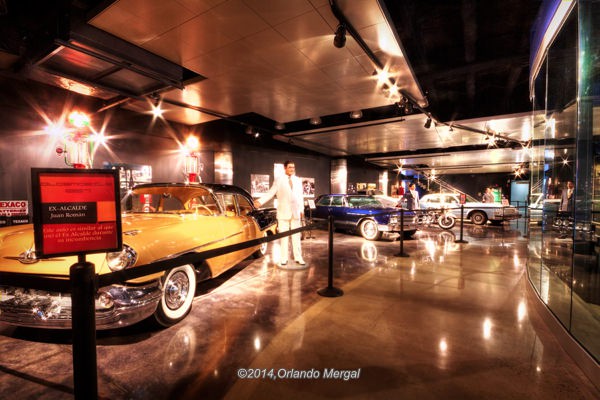
Guaynabo’s mayors and their automobiles. Well, sort of.
From here on it’s mostly cars. On your left there’s an exhibit of the municipality’s last five mayors standing next to their official vehicles. The live-size figures look so real that it’s almost like they’re about to talk to you. However, the cars aren’t actually their cars. Like the signs says, they’re “similar” vehicles.
You will notice that the last vehicle has no one standing next to it. That’s because it belongs to Héctor O’Neill García, the current mayor of Guaynabo. Although two of the other ex-mayors are still alive, the museum’s management doesn’t think it would be appropriate to include someone who is still in office.
From there our tour continued on the second level, where there is presently a collection of 18 of the most well preserved Mustangs that you’ll find anywhere in the world. There are Shelbies, a Mustang Bullit, NASCAR racers, drag racers, several Boss 302’s, an Indianapolis pacecar, a Laguna Seca flatbed queen and regular coupe and fastback models that look just like the day they left the lot. If you’re into Detroit muscle this is where your jaw will hit the floor.
But that’s not all you’ll see on the second level. Don’t miss the original 1880 Fleming bicycle that’s next to the staircase. It’s in perfect condition and it has never been restored.
There’s also a collection of antique bicycles and pedal carts, and several exhibits with antique toys, model cars and trucks, and miniature scooters.
And right before you leave the second level there’s the “mother of all simulators”. It’s a computer-aided race car simulator with three LCD screens arranged in a 180 degree layout. Here you can try your hand at driving on an actual race track. And don’t worry about crashing. The “InMotion” Simulator (that’s what it’s called) goes all the way from “dummy level” to “Emerson Fittipaldi”, with everything in between.
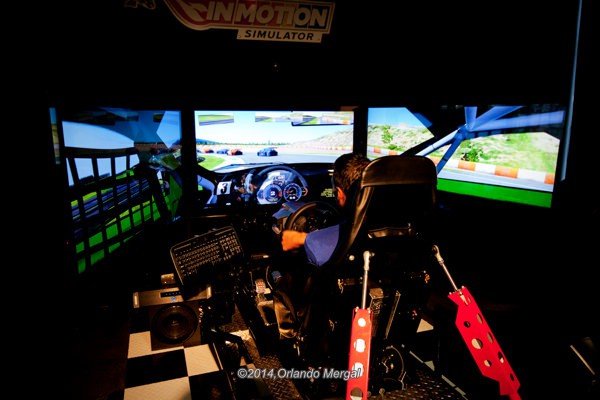
InMotion Simulator
However, before you start “burning rubber” be advised that the price for using this simulator isn’t included in your regular admittance fee. You’ll need to pay an additional $3 per ride to try your hand at race car driving.
Finally, there’s an excellent cafeteria on the third floor with three computers connected to the Internet. There’s also a meeting room that seats 100 visitors and a tourist shop (on the first floor) where you can buy souvenirs, shirts and T‑shirts, ball caps, coffee mugs, toys and a lot, lot more.
Oh, and one last thing. This isn’t the kind of museum where you’ll be reading little cards throughout your visit. There are actual living-breathing museum attendants who will answer your every question.
So, now tell me. Is this the kind of place that you would have expected to find on a small island like Puerto Rico? Of course not. But it’s here. And it’s great!!!
If you’re a car aficionado, or you simply want to do something totally different during your next Puerto Rico vacation, the Museum of Transportation, in Guaynabo, Puerto Rico needs to be high on your wish list!
Enjoy Puerto Rico!
©2014,Orlando Mergal, MA
____________________
Bilingual Content Creator, Blogger, Podcaster,
Author, Photographer and New Media Expert
Tel. 787–750-0000, Mobile 787–306-1590
The map ID you have entered does not exist. Please enter a map ID that exists.
